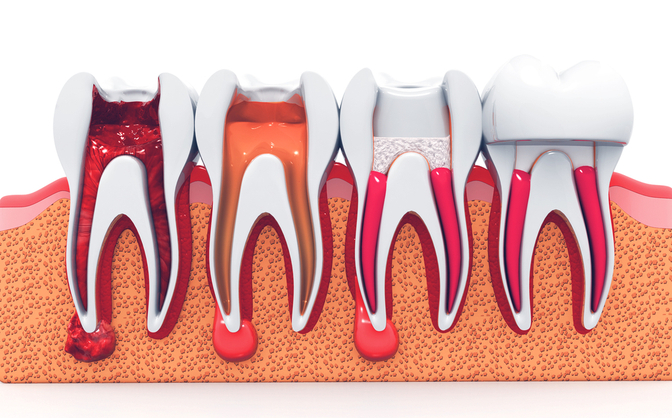
Root Canal Treatment in Alpharetta: Saving Teeth, Relieving Pain, Restoring Smiles
A root canal is often the turning point between ongoing tooth pain and a healthy, restored smile. For residents of Alpharetta, getting reliable, compassionate endodontic care means preserving your natural teeth rather than facing extractions or implants. This article explains what a root canal treatment is, when it’s needed, what to expect, and why choosing the right dentist matters for your comfort and long-term oral health.
What Is a Root Canal?
Inside each tooth is a soft tissue called the pulp. It contains nerves, blood vessels, and connective tissue that help your tooth grow and sense changes in temperature and pain. When this pulp becomes inflamed or infected — due to deep decay, cracks, chips, or trauma — it can cause severe pain, sensitivity, or even abscess formation. A root canal treatment (also called endodontic therapy) involves removing the damaged pulp, thoroughly cleaning and disinfecting the canals inside the roots, then sealing and restoring the tooth so it functions like a healthy tooth again.
Signs You May Need One
Not all dental issues need a root canal, but several symptoms strongly point toward this treatment. Look out for:
-
Intense toothache, especially when chewing or applying pressure
-
Sensitivity to hot or cold that lingers even after stimulus is removed
-
Swelling, tenderness in surrounding gums, or the formation of a bump (abscess) near the tooth root
-
Discoloration or darkening of a tooth
-
Sometimes no pain at all; infection can exist behind the scenes, discovered only by X-ray or during routine exams.
The Root Canal Procedure: What to Expect
Going into treatment with an idea of steps involved helps ease anxiety:
-
Diagnosis & Planning: The dentist or endodontist will examine the tooth and take X-rays (or sometimes 3D imaging) to assess the shape of canals and extent of infection.
-
Numbing the Tooth: Local anesthesia ensures you don’t feel pain during the procedure. Modern techniques focus heavily on patient comfort.
-
Accessing the Pulp Chamber: A small opening is made in the crown (top) of the tooth so the pulp chamber and root canals can be reached.
-
Cleaning and Shaping the Canals: Infected tissue is removed; canals are cleaned, disinfected, and shaped. This step is crucial to remove bacteria and prevent reinfection.
-
Filling and Sealing: Once clean, canals are filled (often with a rubber-like material called gutta-percha) and sealed. The top of the tooth is then restored—often with a crown—to protect it from fracturing.
-
Post-treatment Care: There can be mild soreness and sensitivity for a few days. Usually over-the-counter pain relief helps. Maintaining good oral hygiene and returning for a follow-up restoration (like a full crown) is important to restore full function and strength.
Myths & Misconceptions
Many people fear root canals, but much of the worry comes from myths:
-
“Root canals are painful.” In fact, the tooth is already often causing pain before treatment; the procedure relieves it. Thanks to anesthesia, discomfort during the treatment is minimal.
-
“It takes many visits.” Sometimes yes, but many modern root canals are completed in one visit, depending on complexity and condition of the tooth.
-
“Extracting the tooth would be easier.” While extraction might seem simpler, keeping your natural tooth helps preserve chewing ability, prevents shifting of surrounding teeth, and avoids more extensive restorative work.
Benefits of Undergoing a Root Canal
-
Eliminates pain and infection
-
Preserves the natural tooth, avoiding extraction
-
Restores chewing ability and normal function
-
Prevents spread of infection to other teeth or the jawbone
-
Helps maintain a natural smile—both appearance and oral structure.
Why Choose a Skilled Provider in Alpharetta
Quality matters. Here are factors you should consider:
-
An endodontist (a specialist in root canals) or a general dentist with extensive experience
-
Use of modern diagnostic tools (digital X-rays, CBCT imaging) for accurate evaluation of roots and canals.
-
Anesthesia options and a gentle, patient-friendly environment to minimize discomfort and anxiety.
-
Good follow-up care, including restoration with crown or filling, and clear instructions for healing.
How to Prepare & Recover Smoothly
Before Treatment:
-
Let your dentist know of any medical history (especially heart conditions, diabetes, allergies)
-
Avoid eating immediately prior, unless instructed otherwise
-
Arrange for some rest after the procedure
After Treatment:
-
The treated area may feel tender for a few days; avoid chewing hard or sticky foods until final restoration is done
-
Maintain excellent oral hygiene—brushing, flossing, regular check-ups
-
Watch for any return of swelling, severe pain or signs of infection; follow up with your dentist if needed
Conclusion
If you’re in Alpharetta and experiencing tooth pain, lingering sensitivity, or other warning signs, a root canal could be the solution to relieve your discomfort and preserve your natural tooth. Modern root canal treatment is safe, effective, and designed with patient comfort in mind. Choosing a skilled dental professional who uses up-to-date techniques and provides good restoration and follow-up is key to long-term success. At a practice like Smile Makers of GA, you do not have to sacrifice quality or comfort—your smile deserves nothing less.
